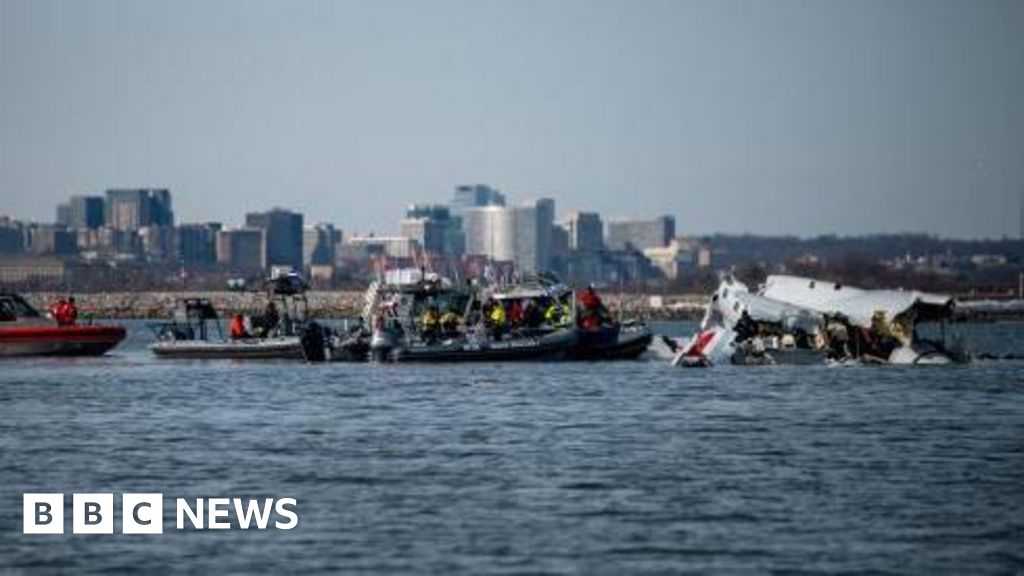 |
|
The tragic mid-air collision over Washington D.C., resulting in the loss of 67 lives, has brought into sharp focus a long-standing and critical issue within the American air traffic control system: chronic understaffing. Transportation Secretary Sean Duffy acknowledged that staffing levels at Reagan National Airport were ‘not normal’ at the time of the crash, a statement corroborated by reports indicating that a single air traffic controller was responsible for managing both helicopter and airplane traffic – a task typically requiring two individuals. This revelation underscores a systemic problem that extends far beyond a single incident. The incident raises serious questions about safety protocols and resource allocation within the FAA, highlighting the potential consequences of operational compromises made in the face of persistent staffing deficiencies.
The investigation into the crash, led by the National Transportation Safety Board (NTSB), is examining multiple factors, including the helicopter's unusually low altitude of approximately 200 feet – the maximum permitted altitude in that airspace near Reagan National Airport. Secretary Duffy also questioned the timing of the military helicopter's flight, suggesting that conducting such a mission at 9 PM, during peak air traffic hours, posed unnecessary risk compared to a later, less congested time. These inquiries delve into the complexities of air traffic management, highlighting the need for a holistic approach that considers not only the immediate circumstances of the crash but also the broader context of persistent understaffing within the air traffic control system.
The understaffing problem is not merely an isolated incident at Reagan National Airport; reports indicate that over 90% of air traffic control facilities across the nation are operating below recommended staffing levels. Secretary Duffy explicitly stated that the United States has faced a chronic shortage of air traffic controllers for an extended period, leading to overworked and stressed personnel. While acknowledging this reality, he stressed that it is not an excuse for inadequate safety measures and affirmed his commitment to addressing the issue. This persistent shortage highlights the urgent need for proactive measures to attract, train, and retain qualified air traffic controllers, a process which, according to Duffy, cannot be accomplished overnight but requires a comprehensive long-term strategy.
The consequences of this understaffing extend beyond immediate safety concerns. The added stress and workload placed on existing controllers can lead to burnout, reduced efficiency, and increased potential for human error. This, in turn, creates a ripple effect, impacting air travel delays, overall efficiency of the air transportation system, and, ultimately, the safety of air travelers. The investigation into the Washington D.C. crash should serve as a critical wake-up call, compelling a thorough examination of the current air traffic control system and prompting decisive action to address the systemic issues contributing to the ongoing shortage of personnel. The implementation of innovative training programs, improved compensation and benefits packages, and perhaps even a review of the organizational structure of the FAA are crucial steps to ensure the long-term safety and efficiency of American air travel.
Beyond the immediate response to the tragedy, the long-term solutions require a multifaceted approach. This includes not only increasing the number of air traffic controllers through robust recruitment and training programs but also addressing the underlying issues that contribute to high turnover rates. This might involve improving working conditions, addressing potential burnout issues through better workload management, and enhancing the overall appeal of the profession to attract and retain talented individuals. The need for technological advancements in air traffic management systems should also be considered. Investing in advanced automation technologies could potentially alleviate some of the workload burden on controllers, improving efficiency and safety, while simultaneously lessening the need to rely so heavily on human resources during peak hours.
The Washington D.C. crash is a stark reminder of the critical role air traffic controllers play in ensuring the safety of air travel. Addressing the chronic understaffing issue is not merely a matter of addressing a staffing deficit; it is a matter of prioritizing public safety. The investigation into the crash, along with the ongoing efforts by the FAA and the Department of Transportation, must lead to concrete and sustainable solutions that guarantee a safer and more efficient air travel system for all Americans. The commitment to both short-term and long-term strategies is vital to prevent similar tragedies in the future. The immediate aftermath calls for action, but it's the long-term vision and commitment that will truly prevent this from happening again.
Source: Air traffic control staffing 'not normal' during DC crash - officials
